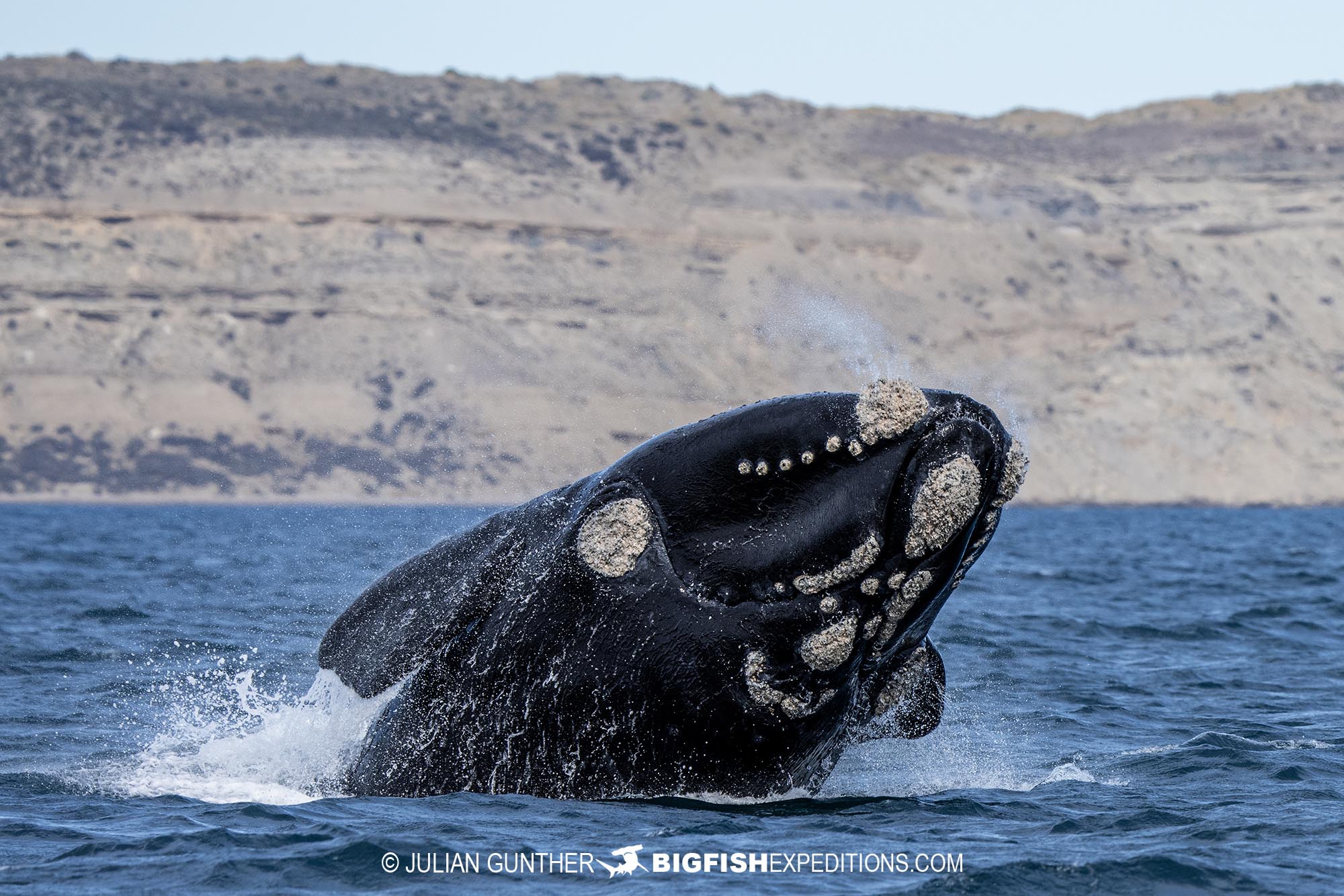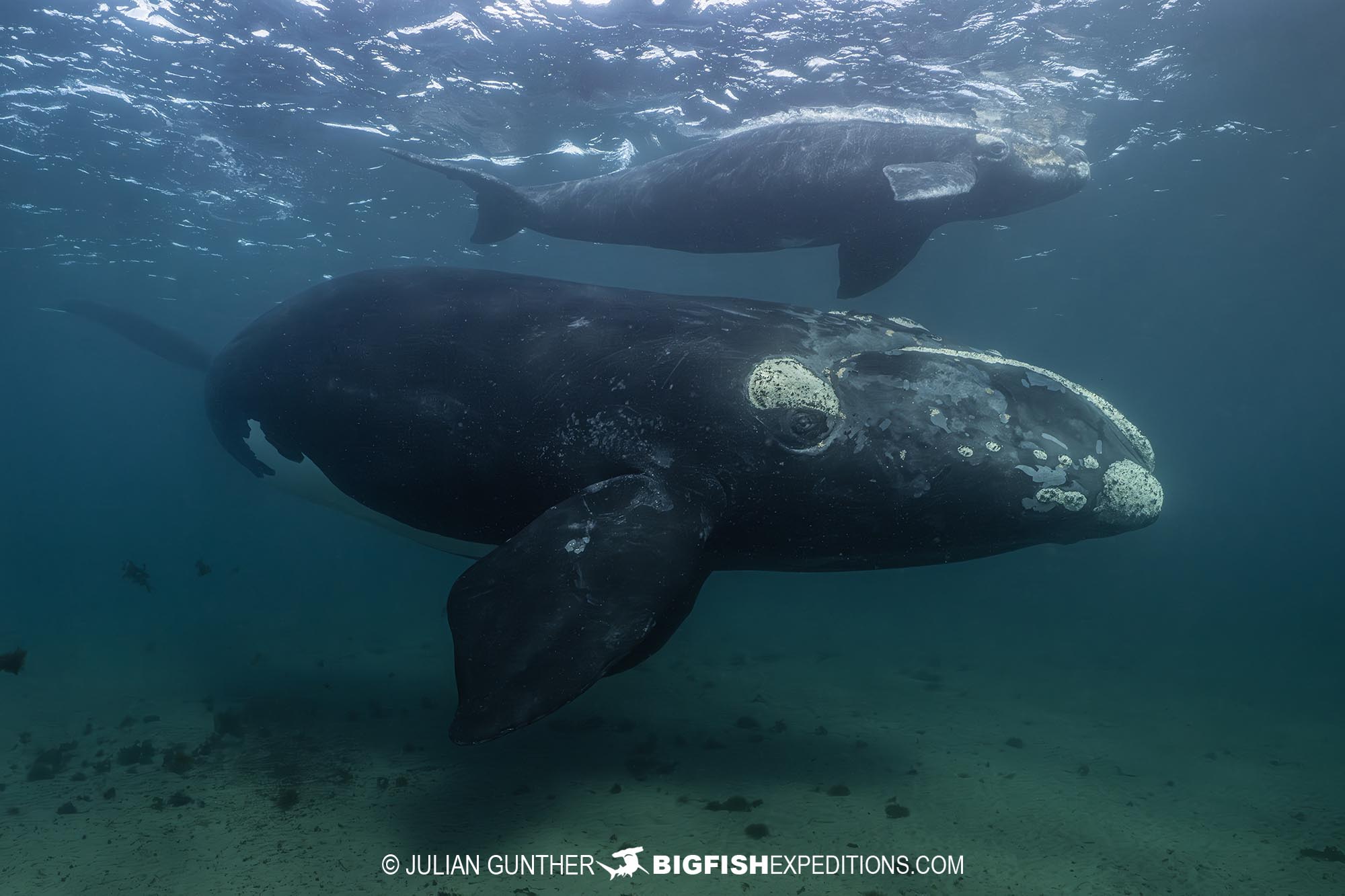A Big Fish Expeditions Trip Report
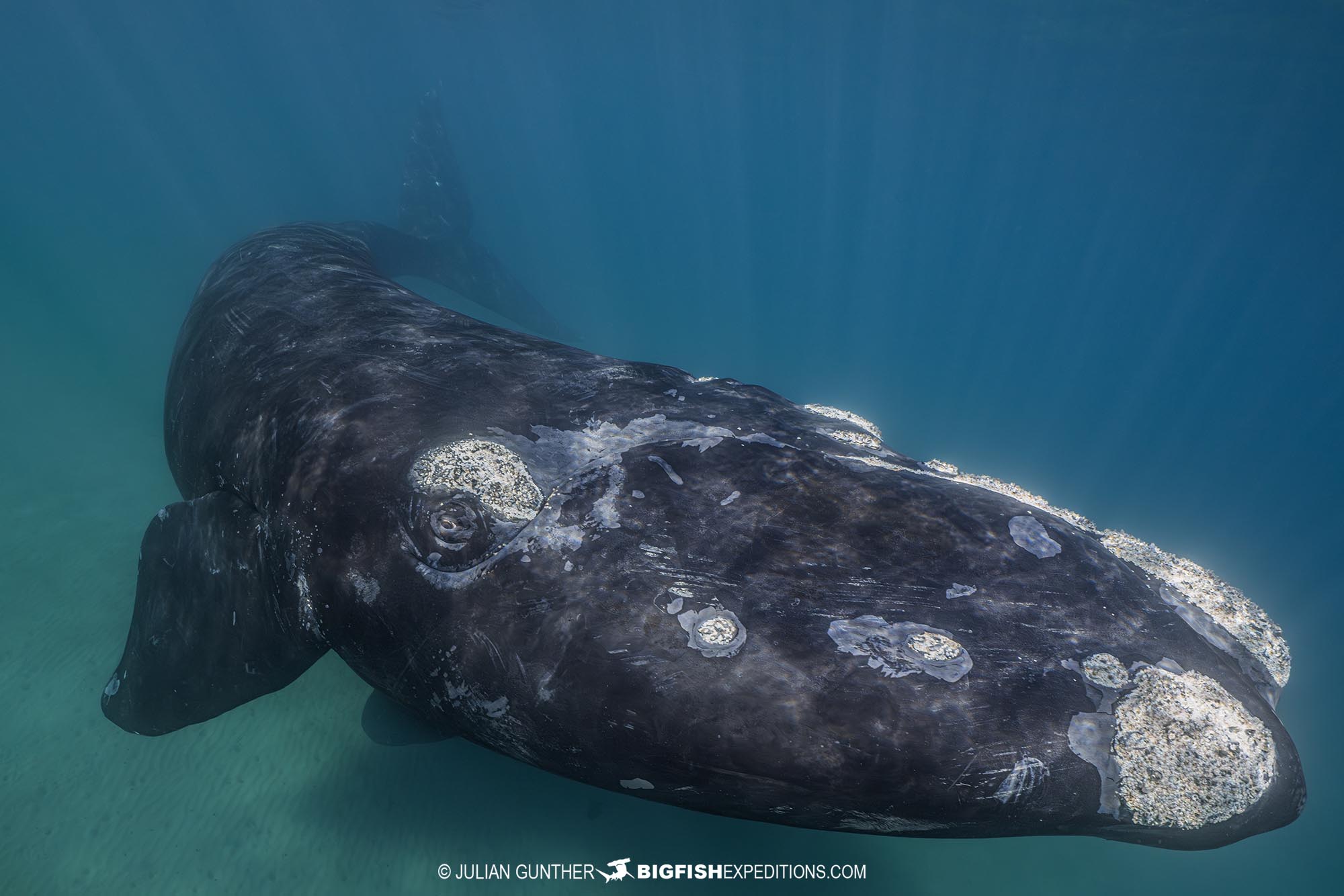
Epic Patagonia
Patagonia remains one of the last bastions of true wilderness left on the planet. In the south, craggy peaks and windswept landscapes are the domain of the pumas. In the north, Chubut Province is an arid landscape whose defining feature is the hammer-shaped Peninsula Valdes. This outcropping of land is home to Orcas, Guanacos, Penguins and of course, Southern Right Whales. Big Fish Expeditions returned to the peninsula in late August to once
again lead professional photographers in their quest to photograph these gentle leviathans.
Although we pride ourselves on facilitating guest access to all manner of wildlife throughout the world, this particular trip is only available for professional photographers who can fulfill the necessary prerequisites to obtain government photography and videography permits.
Text and all images are from our 2024 Southern Right Whale Trip by Trip Leader Julian Gunther
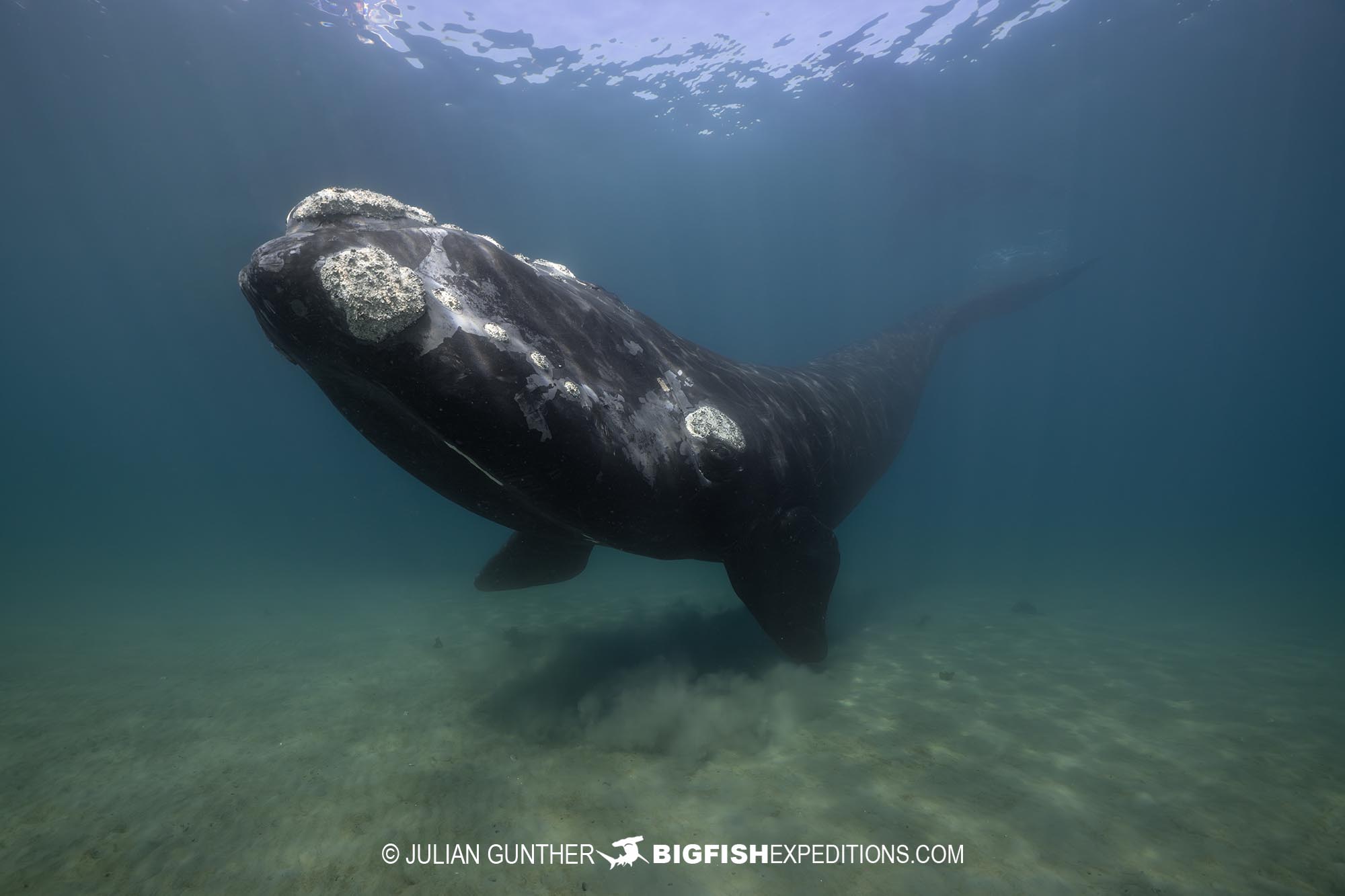
Whales over Breakfast
The night before our expedition began, we gathered at a nearby restaurant for a meet-and-greet and to listen to our briefing. The peninsula is largely exposed to winds, currents and waves that originate from the Antarctic and work their way north and following our briefing it was determined that on our first day we would have a later-than-normal start to allow for offshore conditions to settle. This went over well with the guests as most had recently completed extensive travel and were looking forward to resting in a proper bed as opposed to an airline seat.
The next morning at breakfast, further discussions were held about what to expect and some last-minute photography tips were shared. The highlight was when one of the guests half jokingly commented they thought they saw a whale, but “knew” they were just imagining things. However, they were not. Almost immediately after they made the comment, a whale breached in the distance. Everyone’s jaws dropped. Whale breaches while eating a croissant. It was going to be a good day!
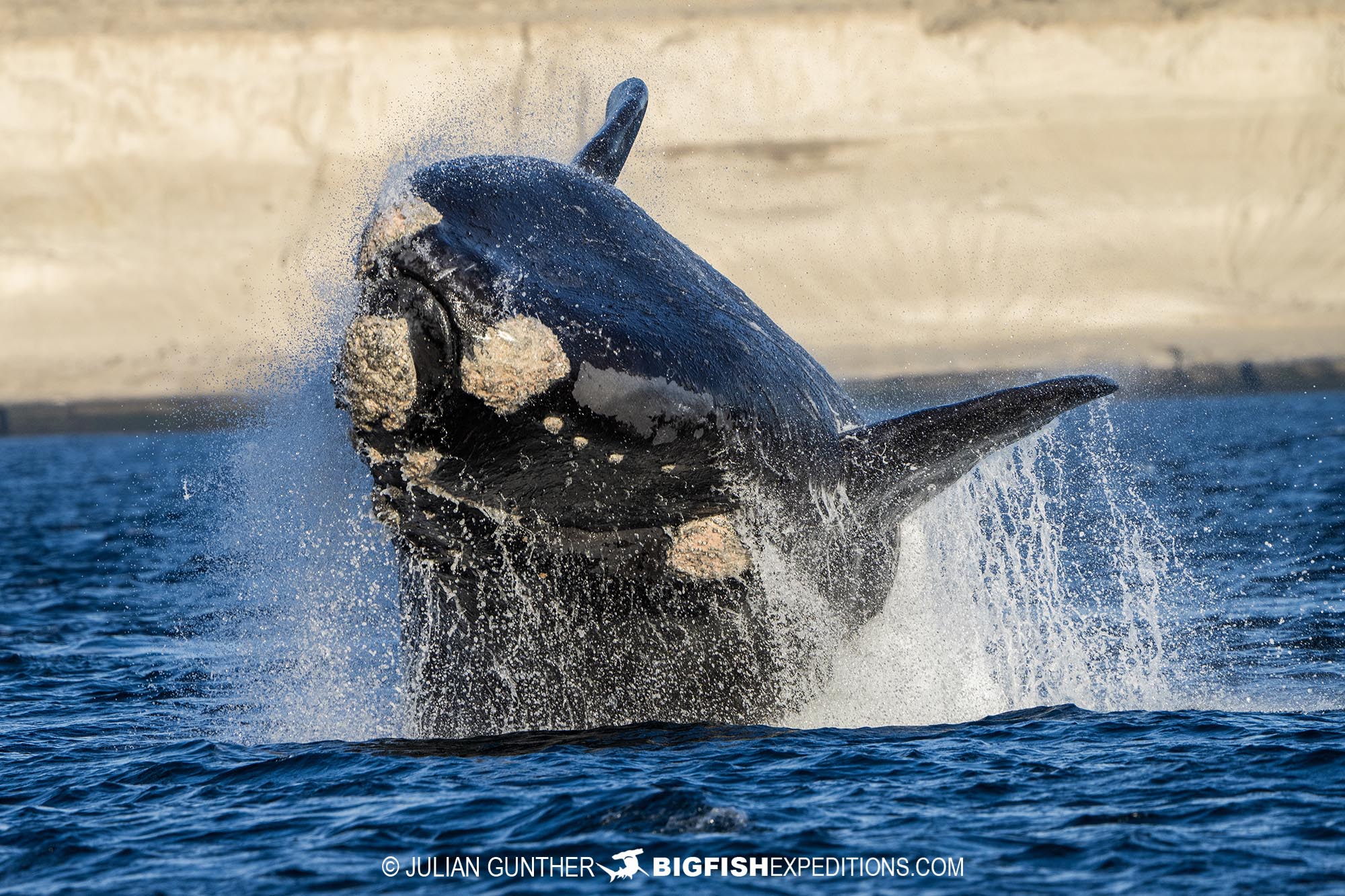
Southern Sea Lion Colony
The boat launched right at noon and headed out to sea, promptly passing three pairs of mother and calves, within the first five minutes. Mouths were agape. As an interesting sidebar, there is a sizable Southern Sea Lion colony at the entrance to our small protected bay, so guests have the opportunity to shoot them twice a day. Female Southern Sea Lions look very similar to their northern counterparts; however, male Southern Sea Lions have a much more pronounced “mane” and look almost bear-like.
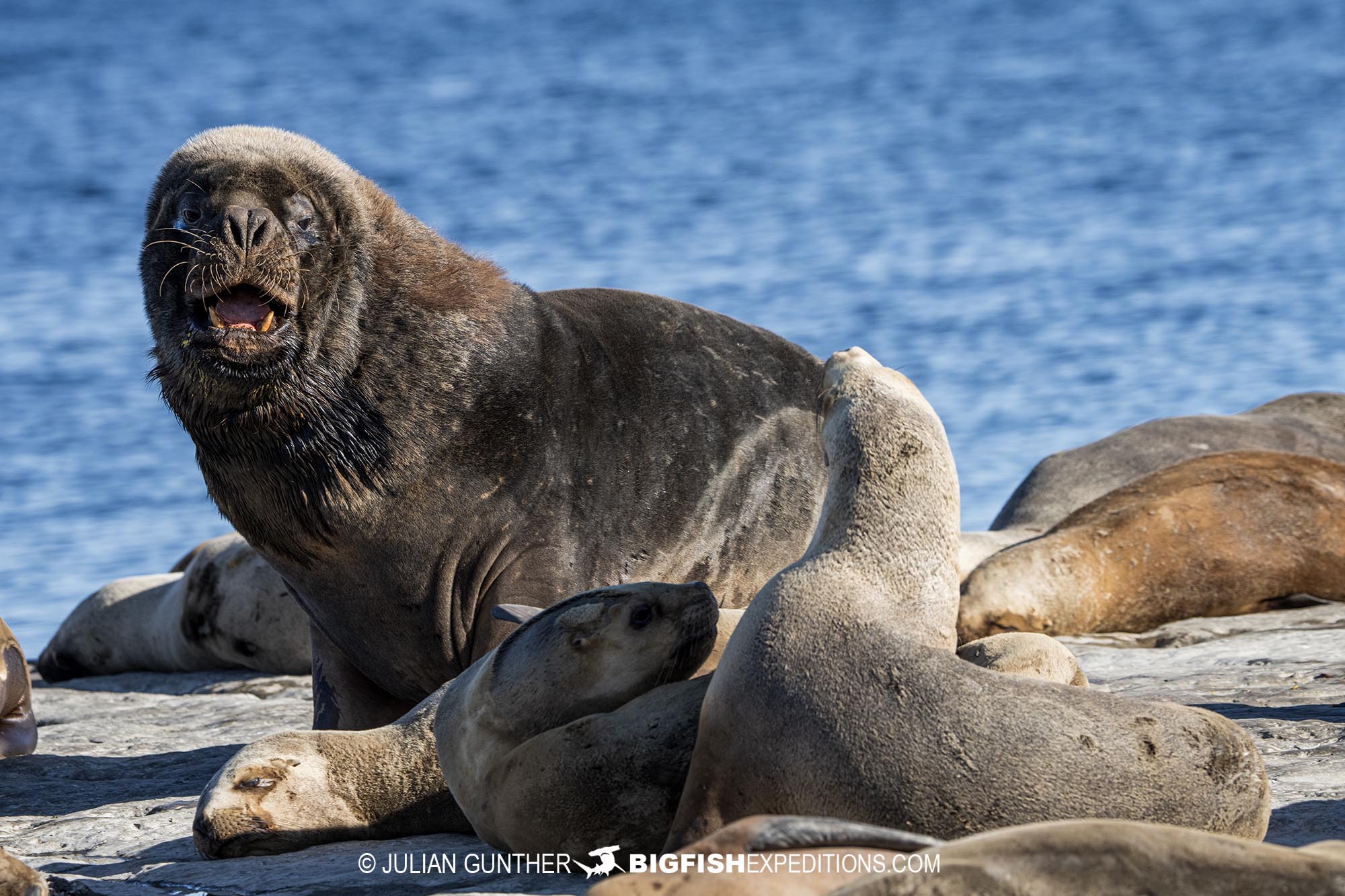
Friendly Calves
Our first day went in search of juvenile whales, as they are more accustomed to boats and sharing the water with other creatures. This was to ensure both the guests’ and whales’ comfort. We promptly found several groups of juveniles, in shallow waters, and photographers entered and exited the water, with ample opportunity to capture footage.
Southern Right Whales are very sociable and curious animals, often swimming directly at photographers and boats. This curiosity was nearly their downfall in the 19 th century, as they were the “right” whale to hunt. However, within the first hours of our first day, everyone on this year’s expedition realized the biggest problem wasn’t going to be finding the animals, but rather figuring out how to fit them into frame.
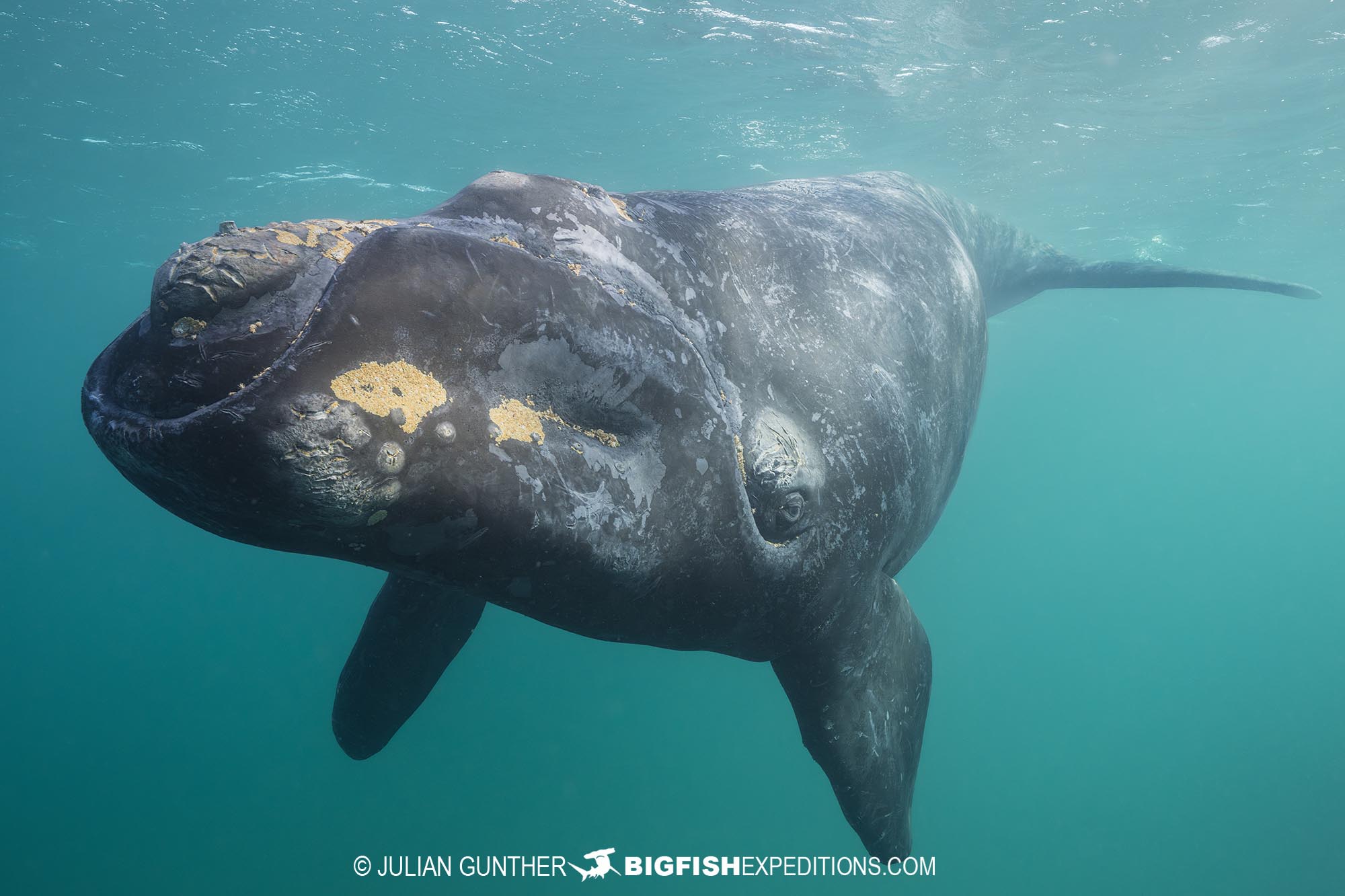
Sunset Whales
The first day was filled with numerous juveniles and we also later attempted some drops with mother and calves. Sometimes mother Southern Right Whales almost seem relieved to have a boat or a photographer, as it distracts her offspring something new to play with, but on this particular day most calves seemed disinterested. As such, we continued focusing on the juveniles and maintained our rate of success. The density of whales around the peninsula is
such that even when you aren’t in the water, there are breaches, tail slaps, finning, spyhops, etc…going on all around, so there is always something to photograph. Later in the day we even came across a much-coveted White Calf, but neither it nor its mother held much interest in our boat, so that particular encounter was limited to topside photography.
As we had a late start, we were able to shoot topside until sundown. Patagonian sunsets are extraordinary. The sky lights up with radiant hues of orange, red, purple, pink, blue and black, and with whales breaching and tailslapping, it can provide for some very special photo opportunities. We returned to port just as the light was fading and everyone drifted off to sleep, in awe of the wildlife spectacle they had just witnessed.
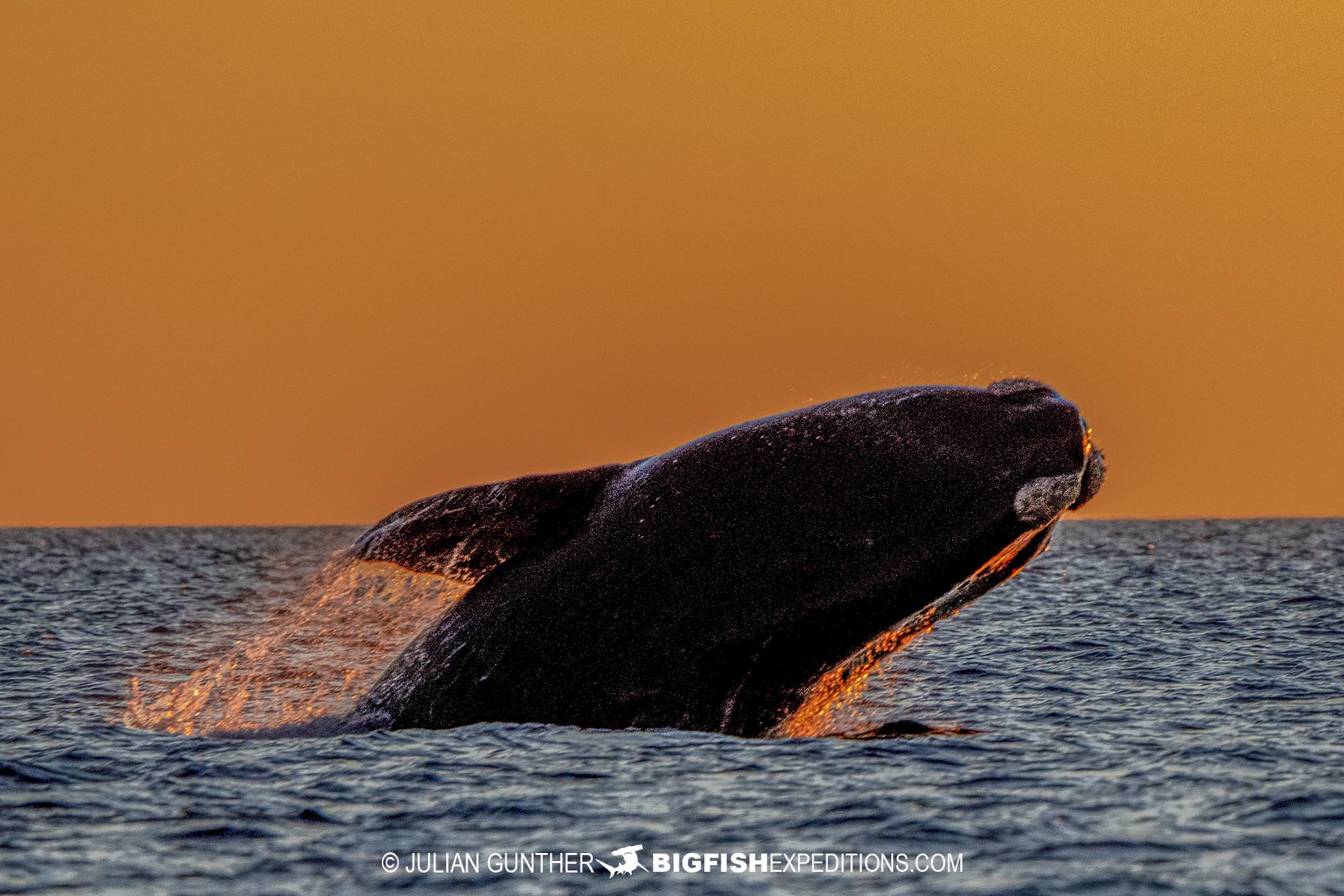
Eye to Eye with Southern Right Whales
Day two was a repeat of the first, with early morning conditions being difficult, but expected to calm around noon. Thankfully the forecast held and our boat departed at nearly the exact same time as the day prior. After passing our local Sea Lion checkpoint we immediately found another group of juvenile whales and set to task in getting the photos and videos everyone had in their minds. The juveniles were very cooperative and would linger, almost posing for the cameras. After several hours with them, they seemingly lost interest and swam away, but almost on cue, a mother and calf swam over to replace them. Unlike day one, this mother and calf seemed very interested in our cameras and would often approach within the boundaries of “comfortable personal space”. This allowed for some amazing shots of the
whales’ eyes, and of course clear profile and portrait shots, as visibility is a non-issue at that close of range. We even had several penguins and a Dusky Dolphin come by our boat to see what all the commotion was about. Unfortunately neither lingered, but it was still a welcome surprise to see some of the peninsula’s other residents. The mother and calf stayed for several more hours. They decided to move on right around the same time we were losing the light, so we were able to maximize our in-water time that day. Once again we stayed out until sundown to try and capture more sunset whale activity.
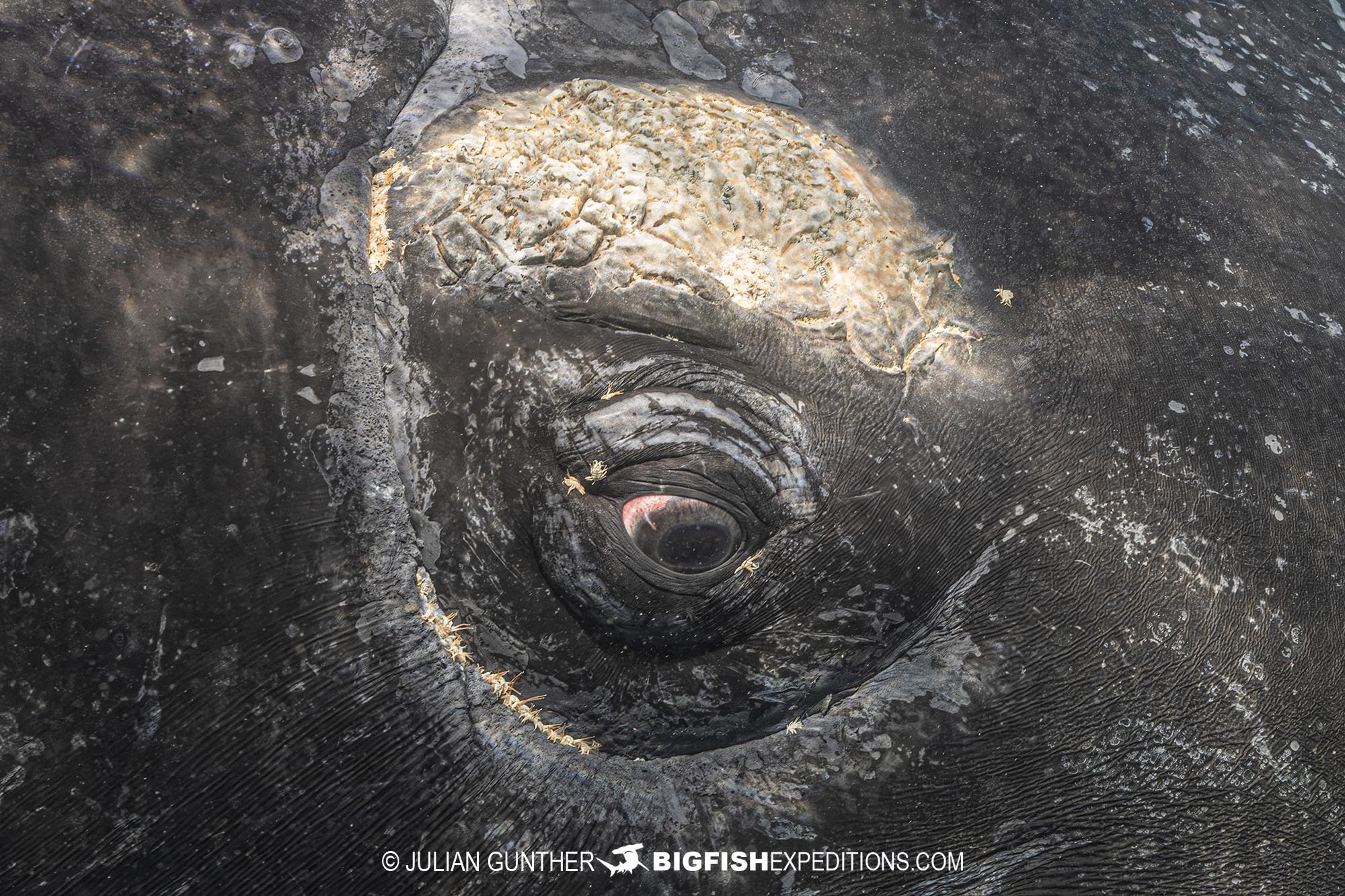
A great day with whales
The next day went off almost perfectly with an early morning departure due to minimal waves and wind, and the added bonus of an early high tide, which allowed us close to shore.
Shooting Southern Right Whales in 20ft – 30ft (6m – 9m) gives a whole other perspective, as it provides a sense of scale to these cetaceans. On this morning, it was as if the whales also got notice of our plan, as we immediately found several groups of photogenic juveniles and mothers wanting to show off their offspring. By now our photographers had figured out the routine and our entry-exit rotations were going off like a well-maintained Swiss watch. As one
photographer was exiting on the dive ladder, the replacement was simultaneously, quietly entering the water from the other side of the boat. The whales also seemed to be in a playful mood, as breaches were coming thick and fast, and resulted in some truly extraordinary sequences, including a whale calf who wanted us to get a really, really good, close-up, look at its breaching prowess.
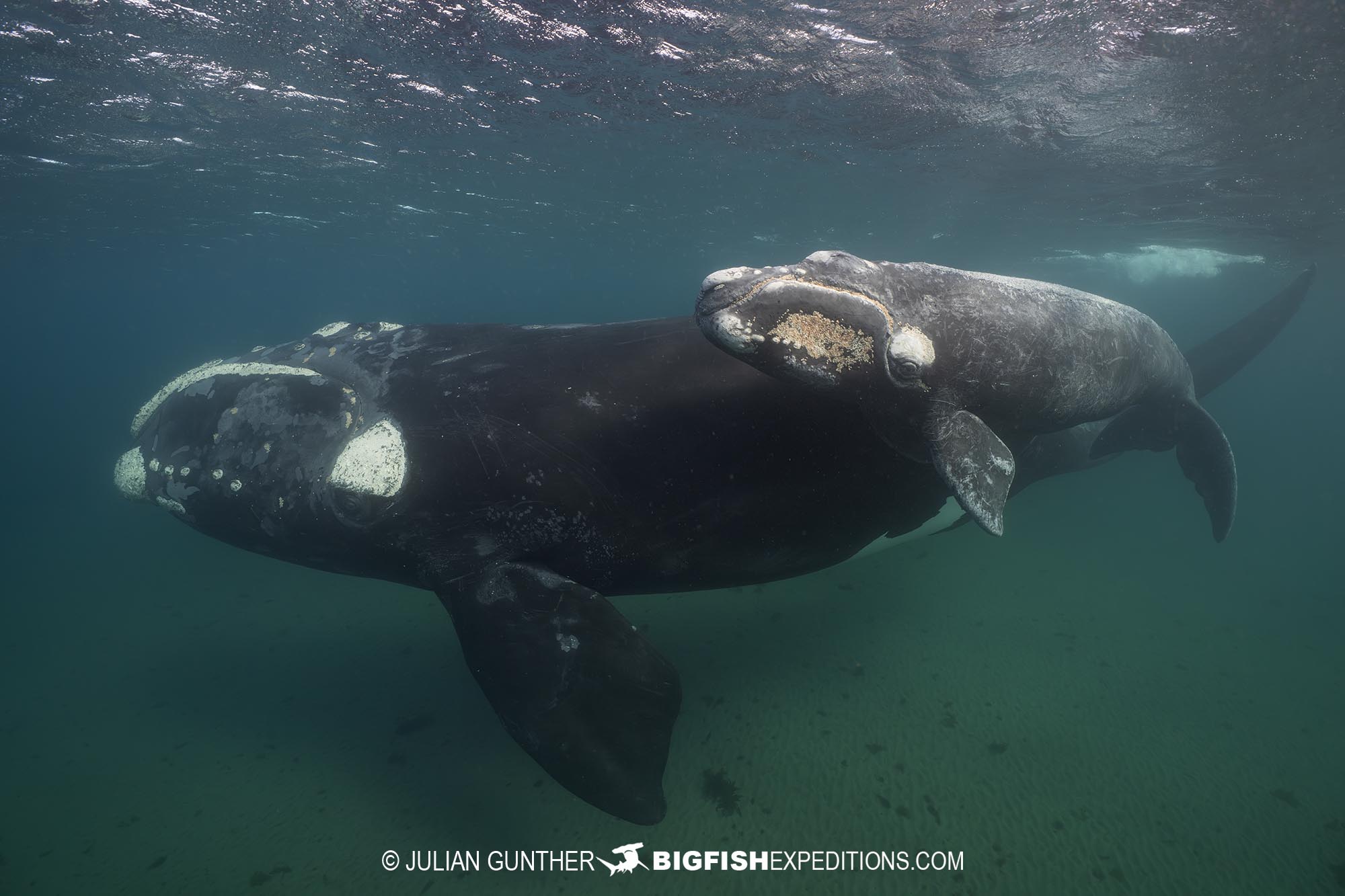
White Calf!
As good as the third day was, the fourth day was the stuff of dreams. The ocean was like glass without a cloud in the sky, and as we raced out to sea, we could easily make out the seafloor at 40ft (12m). It didn’t take long to find more curious juveniles and new mothers. As if to further amplify how good the day was going to be, clear visibility extended both vertically and horizontally, allowing for ample time to see the whales, prepare the shots and line them
up in the viewfinder. Everyone aboard was in awe of the conditions and it was not uncommon for the guests to comment on how amazing it was to be at that exact moment and place. We joked about how the “vanilla icing” would be a white calf, but as we had all exceeded our shooting expectations, we were already beyond content. Then, in the distance, a white figure leapt from the water…a WHITE CALF BREACHING!!!
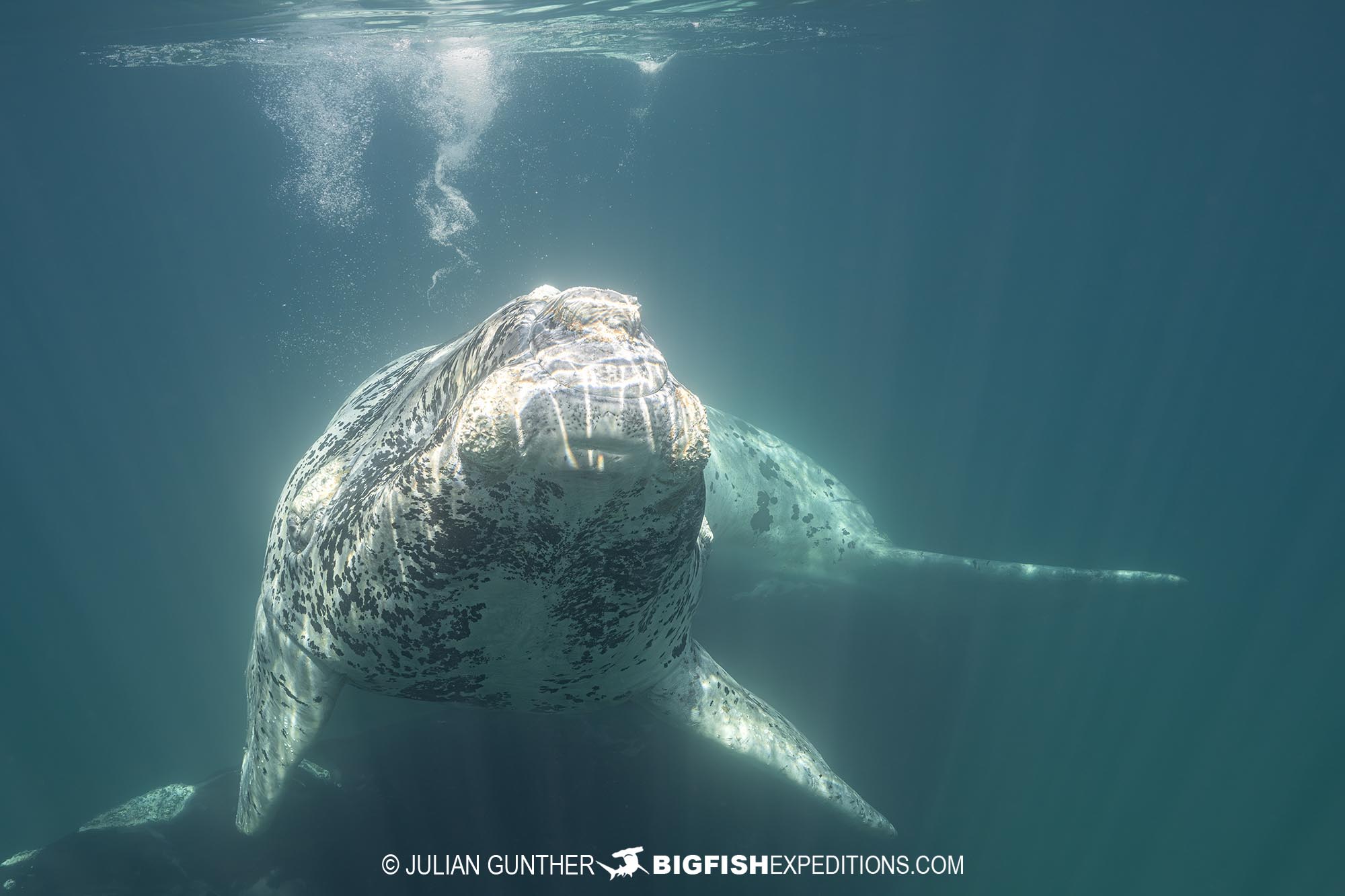
Magic moment with a White Whale
We slowly motored over to the calf and observed it from a distance. It was a riled-up youngster. An interesting quirk about Southern Right Whales is they usually breach in a series of four or five jumps. If you miss the first, its not problem, more will be coming shortly.
For this little white calf, I lost count after eight sequential breaches. As it was clearly in a playful mood and likely had little-to-no notion of personal space, we came up with a plan for each photographer to get one quick sequence with it and for immediate turnarounds. The group leader, me, was the sacrificial lamb to make sure it didn’t want to play too hard. I entered the water and slowly made my way to the whale and it immediately turned and looked directly at me. I froze, trying not to make any sudden movements and for what seemed like hours, we both locked eyes. Finally the whale swam down to the seafloor and looked up at me, as if challenging me, and my small lungs, to follow. Of course, I immediately dove down.
The whale again looked at me as I struggled to fit it into frame and fire off as many shots as possible. I struggled as my lungs began to burn, and then made my reluctant, but necessary, return to the surface. The boat then signalled if it was ok to proceed and we began our quick turn-and-burn session. Thankfully, the white calf was at least temporarily curious which allowed all the guests to shoot a sequence with this amazing animal.
About one out of every 100 Right Whale births result in a white calf. They are not albinos, but rather pigment morphs, that will gradually darken to the more recognizable black as they reach adulthood.
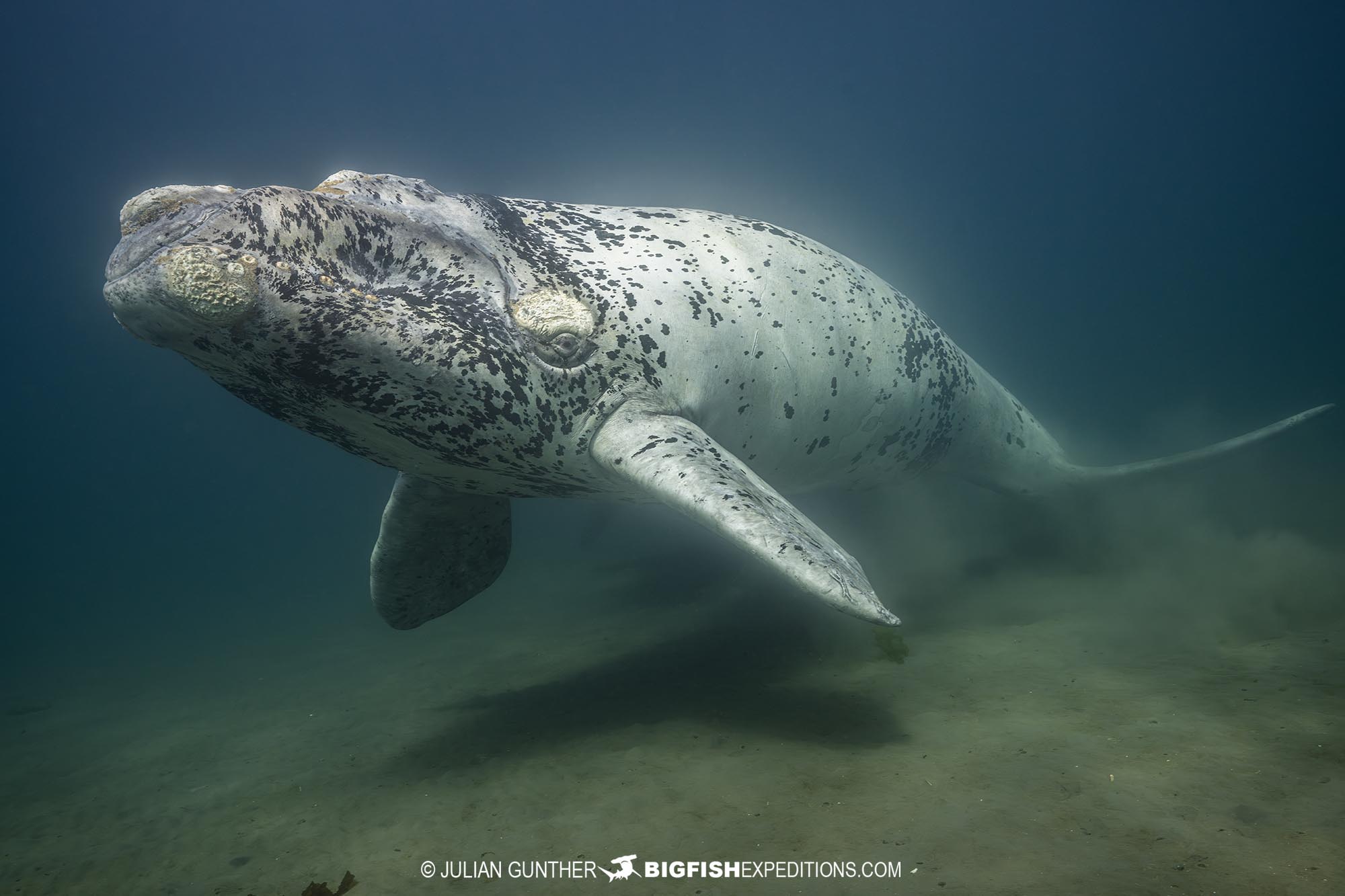
Celebration
That amazing encounter wrapped-up the in-water portion of the day, but we had one last surprise in store for our guests, a traditional Argentinian “assado” or BBQ that evening. Conditions were looking questionable for our final day, so we moved forward our BBQ plans by one day. Argentinians are word-renowned for their meats, Malbecs and whales, and since we had already checked off one item on that list, we now focused on the other two. Food, drink, laughter and wildlife stories were all in plentiful supply that evening. The residents of Peninsula Valdes long ago realized that for them to prosper, the wildlife has to do so as well. As such, they are excited to share their local ecology while at the same time being very cognizant of their role as stewards of the peninsula and its precious inhabitants.
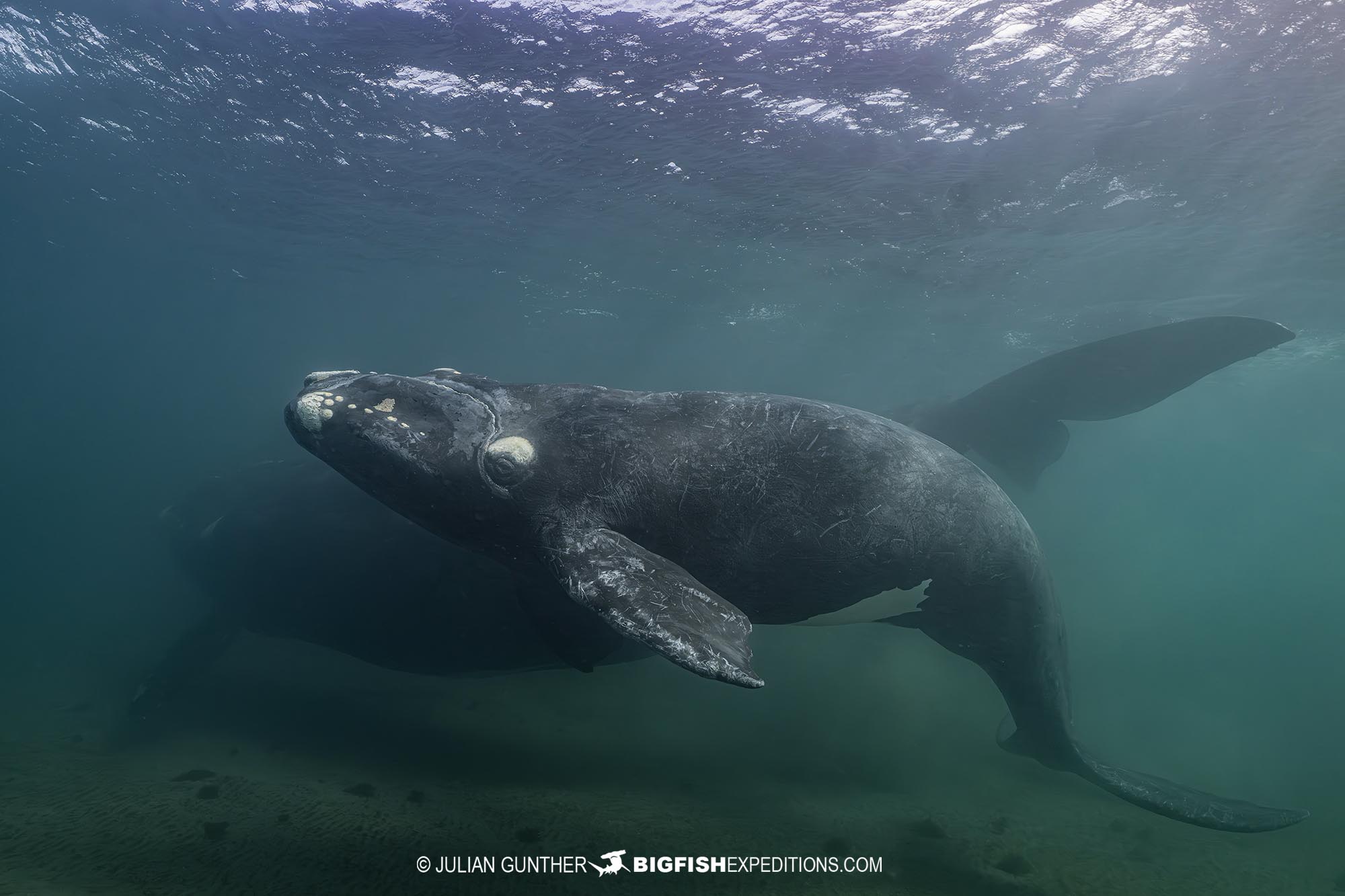
Close encounters with Southern Elephant Seals
Unfortunately our final day was weathered-out. Conditions were navigable for the larger whale watching boats, but decidedly questionable for our smaller boat. To paraphrase an old adage, “you can always dive another day.” As such, we chose to go on an excursion to Punta Norte and Caleta Valdez, on the far side of the peninsula. Both locations are haul-outs for Southern Elephant Seals and Southern Sea Lions, and have been made famous by the local Orcas who prey upon them. The Peninsula Valdes Orcas have been made famous by racing up onto the beaches and plucking unsuspecting pinnipeds right off the sand, before wriggling their way back into the surf. Although it wasn’t the right time of year for this behavior and the Orcas were last sighted many kilometers away, its still provided us the opportunity to see where this famous behavior occurs. In addition, our photography permits allowed us access
onto the beach itself, and under-government escort, to approach the Elephant Seals and Sea Lions. Several of our guests had never been that close to an Elephant Seal, so it was an unexpected and welcome experience for all.
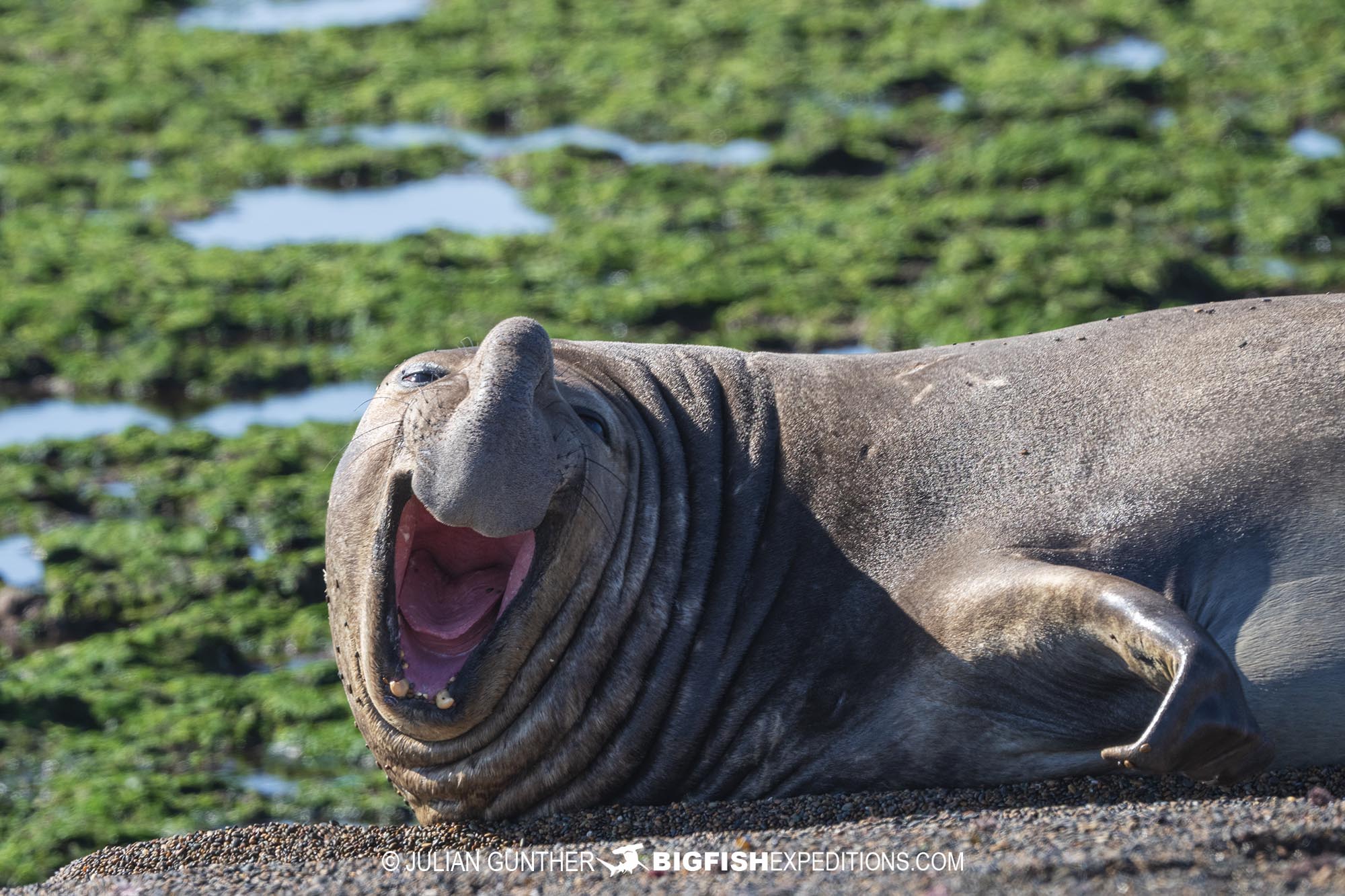
Future Southern Right Whale Photography Opportunities
Following the conclusion of our terrestrial excursion, we headed back to our hotel for the unenviable task of packing and returning to the real world after spending a magical week in this near-mythical peninsula.
Our trips are designed for professional photographers and are conducted under special permit. During our trips in Patagonia, our small group of 4-5 guests (plus our guide) are the only people legally allowed to snorkel with Southern Right Whales in all of South America. We feel very lucky to have this very special privilege!
If you would like to join one of our future expeditions to photograph Southern Right Whales underwater, please let us know: Southern Right Whales Photography Expedition
